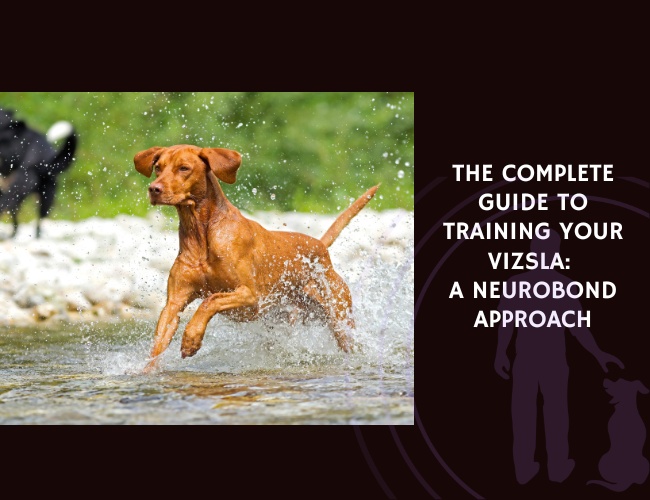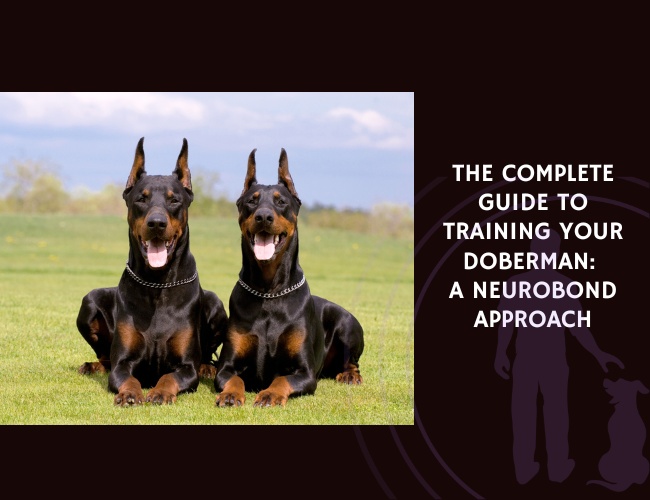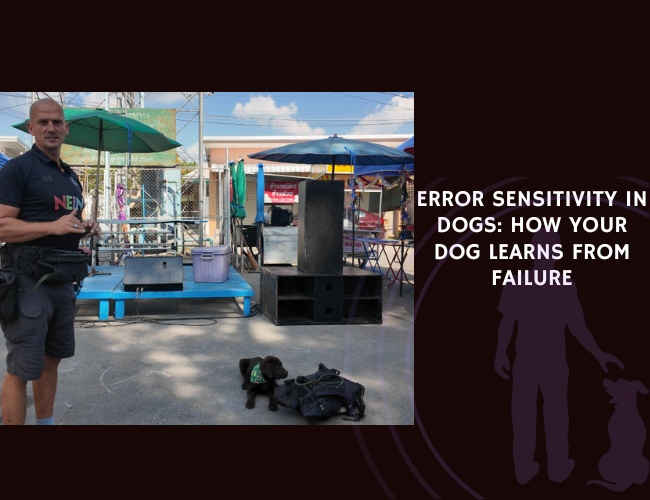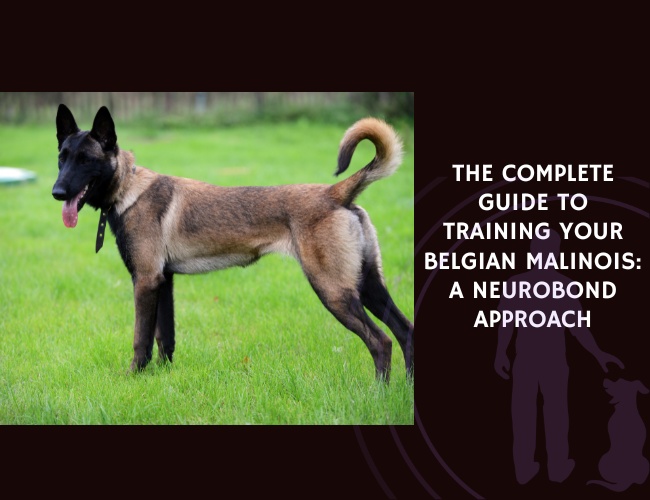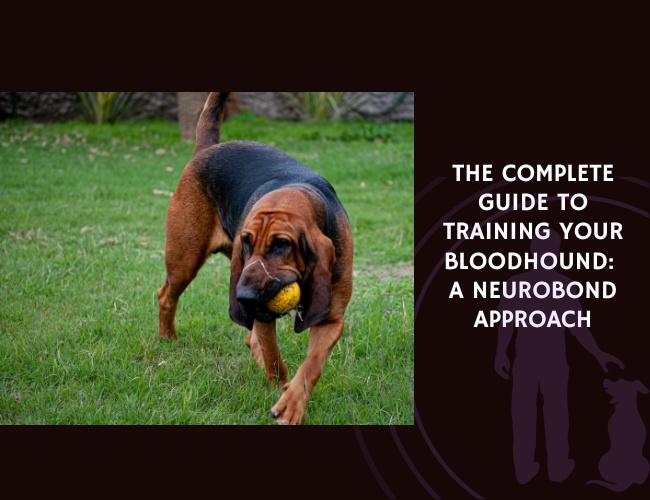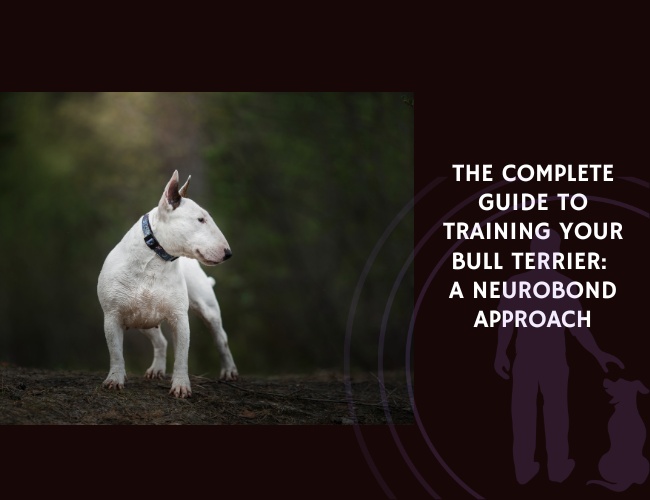Introduction
The Vizsla—often called the “Velcro dog” for their intense devotion—represents one of the most emotionally attuned breeds in the canine world. These Hungarian pointers carry centuries of hunting partnership in their genes, yet their true gift lies not in their pointing ability, but in their profound capacity for connection. If you’re seeking a training approach that honors your Vizsla’s sensitive nature while channeling their boundless energy, let us guide you through a revolutionary method that transforms training from a task into a living relationship.
Did you know that Vizslas possess one of the highest emotional intelligence scores among sporting breeds? This neurological wiring makes them exquisitely responsive to relationship-based training—but only when we understand how to speak their language. 🧡
Character & Behavior: Understanding Your Vizsla’s Inner World
Your Vizsla’s behavior isn’t random—it’s a sophisticated communication system shaped by centuries of selective breeding and refined by their individual experiences. These copper-colored athletes operate on a unique frequency that blends hunting drive with an almost human-like need for emotional connection.
The Vizsla Operating System Think of your Vizsla as a highly sophisticated operating system running on four legs. Their programming includes:
- Hypersensitive emotional radar: They detect and mirror your emotional state within milliseconds
- Drive-based problem solving: Every behavior is an attempt to solve a perceived need
- Pack-oriented security seeking: Isolation triggers genuine distress, not mere preference
Behavioral Signatures You’ll Notice
- The Shadow Effect: Your Vizsla follows you room to room, maintaining visual contact even during rest
- Energy Escalation Patterns: Without structured outlets, their energy compounds rather than dissipates
- Sensitivity Responses: They may freeze, retreat, or become hyperactive when overwhelmed—all valid coping mechanisms
This isn’t neediness or anxiety—it’s breed-appropriate bonding behavior that, when understood through the NeuroBond lens, becomes your greatest training asset. Next, we’ll explore how your Vizsla communicates these complex emotional states.
Vocalization & Communication: Decoding Your Vizsla’s Language
Vizslas speak a nuanced language that extends far beyond barking. Their communication style reflects their dual heritage as both hunters requiring stealth and companions needing connection. Understanding this vocabulary transforms confusion into clarity.
The Vizsla Communication Spectrum Your Vizsla employs multiple channels simultaneously:
- Whines and Whimpers: Not manipulation but genuine emotional expression—often indicating unmet connection needs
- The “Roo-Roo” Talk: A distinctive vocalization expressing excitement without alarm
- Silent Communication: Body tension, eye contact intensity, and proximity changes speak volumes
Reading the Subtle Signals
- Leaning Behavior: Physical pressure against your leg isn’t dominance—it’s trust-seeking and grounding
- The Vizsla Stare: Intense eye contact serves as an emotional check-in, asking “Are we okay?”
- Tail Telegraph: A low, wide wag signals uncertainty; high, tight movements indicate overstimulation
Through the NeuroBond approach, we don’t suppress these communications—we acknowledge and redirect them into constructive dialogue. When your Vizsla whines during training, they’re not being difficult; they’re asking for clearer guidance within the relationship framework.
Training & Education: The NeuroBond Method in Action
Traditional training often fails with Vizslas because it treats them as machines requiring programming rather than emotional beings seeking partnership. The NeuroBond approach recognizes that your Vizsla’s intelligence operates through relationship channels, not mechanical repetition.
Building the Foundation: Connection Before Commands Before teaching a single behavior, establish the invisible leash of trust:
- The Check-In Ritual: Reward every voluntary eye contact for the first two weeks—no commands, just connection
- Parallel Movement: Walk together without formal heeling, letting natural synchronization develop
- Emotional Mirroring: Match their calm energy with yours, creating a feedback loop of regulated behavior
Instinct-Guided Learning Pathways Your Vizsla learns best when allowed to discover solutions:
- The Standing Leash Method: Step on the leash during excitement. Your Vizsla will naturally offer a sit or down—reward this self-discovered solution
- Natural Recall Building: Start recalls during moments of voluntary approach, layering the command onto existing desire
- Prey Drive Redirection: Channel hunting instincts into structured games that satisfy genetic needs
Addressing Vizsla-Specific Challenges
- Energy Management: Never try to exhaust a Vizsla—teach settling behaviors through gradual duration building
- Sensitivity Training: Use marker words before physical rewards to prevent overwhelming their emotional system
- Independence Building: Practice micro-separations throughout the day, always returning before distress peaks
Remember: Every interaction is training. Your Vizsla is constantly learning about relationship dynamics, not just during formal sessions. 🐾
Performance & Activities: Channeling the Vizsla Drive
Vizslas possess an extraordinary performance capacity that, without proper outlets, transforms into destructive creativity. The NeuroBond approach views activities not as energy drains but as relationship-strengthening experiences that satisfy deep genetic programming.
Understanding Drive Architecture Your Vizsla’s drives interconnect like a neural network:
- Hunt Drive: Seeking, tracking, pointing—all hardwired sequences seeking completion
- Pack Drive: Performance enhanced when working alongside their human
- Play Drive: Not frivolous but essential for emotional regulation and learning
NeuroBond-Aligned Activities Structure activities to build connection while satisfying instincts:
- Begin with “find it” games using their meals—this taps into natural foraging
- Progress to structured nose work, allowing them to lead while you follow
- The magic moment: when they check in mid-search, confirming the bond holds even during drive
Movement Patterns That Heal
- Canicross: Running together in harness creates profound synchronization
- Structured Fetch: Add waiting stations and check-ins between retrieves
- Swimming: Natural therapy for both body and mind—many Vizslas find water deeply regulating
Mental Performance Challenges
- Pattern Games: Teach complex sequences that require thinking, not just reacting
- Puzzle Feeders: Transform meals into problem-solving opportunities
- Cooperative Tasks: Teach them to help with daily activities—carrying items, finding objects
The goal isn’t exhaustion—it’s engagement. A mentally satisfied Vizsla settles naturally, while a physically exhausted one simply recharges for the next burst.
Nutritional Recommendations: Fueling the Sensitive System
Nutrition profoundly impacts your Vizsla’s training success. Their sensitive digestive systems and high metabolic rates require thoughtful feeding strategies that support both physical performance and emotional regulation.
The Vizsla Metabolic Profile These lean athletes process nutrition differently:
- Rapid Metabolism: Burns calories 20-30% faster than similar-sized breeds
- Stress-Sensitive Digestion: Emotional states directly impact nutrient absorption
- Protein Requirements: Higher needs due to muscle mass and activity levels
NeuroBond Nutritional Strategies
Feeding as Training Opportunity
- Never free-feed—meals should strengthen the provider-receiver bond
- Use portion of daily food for training rewards
- Practice “permission to eat” exercises, building impulse control naturally
Optimal Fuel Composition
- Protein: 25-30% from high-quality sources (supports neurotransmitter production)
- Fats: 15-18% for sustained energy and coat health
- Complex Carbohydrates: Steady energy release prevents mood swings
Timing for Training Success
- Train before meals when motivation peaks
- Avoid heavy training within 2 hours post-feeding
- Small protein snacks 30 minutes before intensive work enhances focus
Sensitivity Considerations
- Watch for food-behavior connections—some Vizslas react to certain proteins
- Consistency matters more than variety for sensitive stomachs
- Hydration directly impacts emotional regulation—ensure constant access
Bonded. Bright. Boundless.
Vizslas don’t follow pressure—they follow presence.
Their sensitivity is their intelligence in motion. Harshness fractures trust, but quiet consistency invites their whole heart. They need more than direction—they need emotional truth.
Every movement is a message.
Your Vizsla doesn’t act out—they reach out. Whines, stares, body lean—they’re questions, not disobedience. When you answer with understanding, training dissolves into dialogue.
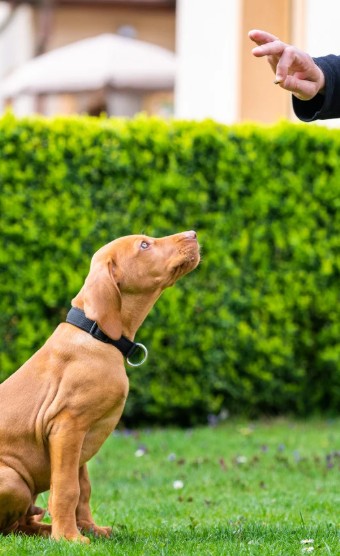


This isn’t obedience—it’s alignment.
The invisible leash isn’t forged through commands. It’s built moment by moment in mutual awareness. And once your Vizsla chooses you—you’ll never walk alone again.
Health Concerns: The Mind-Body Connection
Vizslas experience health through an integrated mind-body system where emotional and physical wellness intertwine inseparably. Understanding this connection transforms how we approach both preventive care and training challenges.
Stress-Related Health Patterns Your Vizsla’s sensitive nature manifests physically:
- Idiopathic Epilepsy: Often triggered or worsened by chronic stress
- Immune Sensitivities: Emotional upheaval can trigger skin conditions and allergies
- Digestive Disruptions: Anxiety directly impacts gut health—the “second brain”
The NeuroBond Health Approach
Preventive Emotional Care
- Daily Regulation Rituals: Predictable routines reduce cortisol spikes
- Massage and Touch Work: Regular gentle bodywork prevents tension accumulation
- Breathing Synchronization: Practice calm breathing together—they’ll match your rhythm
Recognizing Early Warning Signs
- Behavioral Changes: Sudden training regression often signals physical discomfort
- Energy Fluctuations: Hyperactivity may mask pain or discomfort
- Appetite Variations: Food refusal in food-motivated Vizslas warrants investigation
Common Vizsla Health Challenges Through a Training Lens
- Hip Dysplasia: Modify jumping exercises early; build supporting muscle through swimming
- Eye Conditions: Adjust training for vision changes—rely more on verbal and touch cues
- Hypothyroidism: Impacts learning and energy—work with your vet to optimize medication timing around training
Remember: A physically comfortable Vizsla learns exponentially better. Address health proactively to maintain training momentum.
Lifestyle & Environment: Creating the Optimal Setting
Your Vizsla’s environment shapes their entire behavioral landscape. These sensitive souls absorb atmospheric changes like emotional sponges, making environmental design crucial for training success.
The Vizsla Space Requirements
Physical Environment Optimization
- Visual Access: Vizslas need sightlines to family members—blocked views increase anxiety
- Comfort Zones: Multiple soft resting areas near human activity centers
- Temperature Regulation: Their thin coat makes them temperature-sensitive—comfort impacts focus
Social Environment Architecture
- Consistent Human Presence: Not 24/7, but predictable availability windows
- Multi-Species Households: Vizslas often thrive with another dog but need individual training time
- Child Integration: Excellent with kids when children understand the dog’s sensitivity
NeuroBond Environmental Strategies
Creating Calm Defaults
- Designated Settling Spots: Teach specific relaxation locations throughout your home
- Environmental Cues: Use scent (lavender), sound (calm music), and lighting to signal rest
- Transition Rituals: Develop routines for shifting between activity and calm states
Managing Environmental Stressors
- Noise Sensitivity: Gradual desensitization to sounds paired with positive associations
- Separation Setup: Never make departures dramatic—practice “boring” exits and returns
- Guest Protocols: Teach visitors how to interact with your sensitive Vizsla
Your home becomes a training laboratory where every design choice supports the NeuroBond connection. 🏠
Senior Care: Evolving the Bond
As your Vizsla enters their golden years—typically around age 10—the NeuroBond approach adapts to honor their changing needs while maintaining the connection that defines your relationship.
The Aging Vizsla Mind Senior Vizslas often experience:
- Cognitive Preservation: Their high intelligence means they need mental stimulation even as physical abilities decline
- Increased Sensitivity: Age amplifies their emotional attunement—they need extra reassurance
- Routine Dependence: Changes become harder to process, making consistency crucial
Adapting Training for Senior Success
Modified Movement Patterns
- Low-Impact Alternatives: Replace jumping with nose touches, running with structured walks
- Micro-Training Sessions: Five 2-minute sessions surpass one 10-minute session
- Success-Oriented Tasks: Set them up to win, building confidence despite physical limitations
Cognitive Maintenance Protocols
- Novel Scent Games: New smells stimulate neural pathways without physical strain
- Gentle Problem-Solving: Food puzzles adapted for arthritic paws
- Social Learning: Watching younger dogs can provide vicarious mental stimulation
The Deepening Bond
- Increased Check-Ins: Honor their need for more frequent emotional connection
- Comfort Communications: Learn their pain signals and adjust accordingly
- Legacy Building: Document their trained behaviors on video—celebrate their lifetime of learning
Senior Vizslas teach us that training never ends—it simply transforms to match life’s seasons. 🧡
Conclusion: Is the Vizsla-NeuroBond Journey Right for You?
The Vizsla represents both an extraordinary opportunity and a profound responsibility. These remarkable dogs offer a depth of connection rarely found in the canine world, but they require an owner willing to engage at their emotional frequency.
You’ll Thrive with a Vizsla If You:
- View training as relationship-building rather than obedience
- Can provide consistent emotional availability, not just physical presence
- Appreciate a dog who mirrors your moods and energy
- Want a true partner, not just a pet
Honest Considerations:
- Vizslas don’t just want your time—they need your emotional engagement
- Their sensitivity means your stress becomes their stress
- Independence isn’t their strong suit—prepare for a lifetime shadow
- Physical exercise alone will never satisfy their complex needs
The NeuroBond Promise When you commit to training your Vizsla through connection rather than control, you unlock something extraordinary. These dogs don’t just learn commands—they learn to read your heart. The invisible leash you build together becomes stronger than any physical restraint.
Your Vizsla is waiting to show you what true partnership means. They’ll challenge you to become more present, more patient, and more attuned to the subtle energies that connect all living beings. In return, they’ll offer unwavering loyalty, intuitive support, and a love that transcends typical human-dog relationships.
The question isn’t whether you can train a Vizsla—it’s whether you’re ready to be transformed by one. 🐾
Next Steps:
- Begin with one NeuroBond principle this week
- Document your Vizsla’s unique communication style
- Trust the process—connection takes time but lasts forever
Remember: In the NeuroBond approach, there are no training failures—only feedback guiding you toward deeper understanding.

